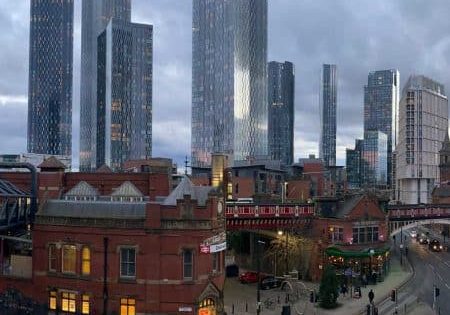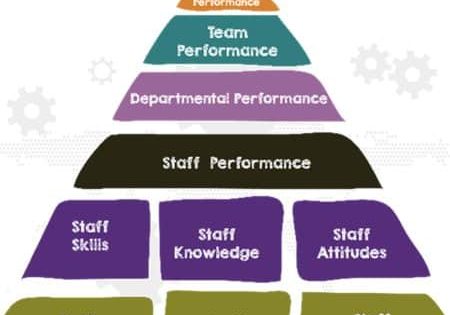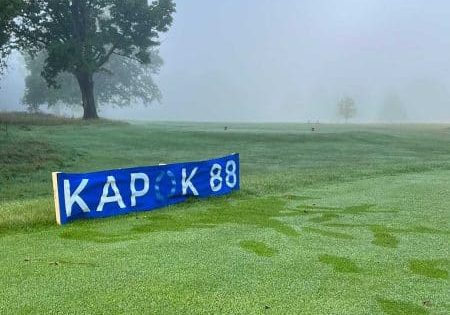This conclusion to the three-part series examines the audience’s commentary on Umney’s paper on lift safeties.
On 10 June 1895, Herbert W. Umney (1870-1958) presented an illustrated paper on lift safeties to the Society of Engineers. Umney’s paper, the audience’s commentary on its contents and the author’s response were published in the Society of Engineers Transactions for the Year 1895.[1] Part one of this investigation examined the paper’s historical context and the author’s biography up to 1895, and part two explored the paper’s contents. The conclusion of this series will examine the audience’s commentary on the paper.
The size of Umney’s audience is unknown. What is known is that 14 Society members choose to respond to his presentation. Five of the respondents were members of the British vertical-transportation (VT) industry; the others were civil and mechanical engineers, many of whom had prior professional experience with projects involving lifts. While some comments addressed aspects of Umney’s paper, such as his observations on specific safety devices, the majority focused on the application of lift safeties and associated challenges. The respondents’ comments and observations were recorded in the meeting minutes. The following summary of this record begins with the non-VT engineers.
James T. Milton (1850-1933) was the chief engineer surveyor at Lloyd’s and was in charge of a lift involved in an accident that, in part, had prompted Umney to write his paper (see part one of this series). The accident resulted in the death of Thomas C. Read (1854-1895), a popular member of Britain’s engineering community. Milton’s comments addressed the contents of Umney’s paper and the unfortunate accident in a broad and rambling manner that touched on a wide range of subjects from the deficiencies of lift operators to inappropriate car design to the effectiveness of various safeties. He also addressed the problem presented by relying on guide rails as critical components of a safety’s operation. He claimed that he “had never seen a so-called guide or runner yet that he would like to trust a descending loaded lift to,” with most guides composed of “a narrow strip of wood screwed on with a few screws to another piece, which was screwed on to a few wood bricks built into the wall, which after a year or two shrank.” He concluded his remarks by noting that most guide rails “might just as well be glued on for all the good they were.”
Druitt Halpin (1843-1922), a mechanical and consulting engineer who specialized in boiler design, felt that the proper overall approach to safe lift operation “was to put in good gear, quite plain, and look after it properly.” In fact, the meeting minutes noted that Halpin:
“did not believe in the use of all the safety gear shown, for the simple reason that he thought it gave a false sense of security, and he did not see why it should be used in the case of lifts any more than it was in much more dangerous cases.”
Mechanical engineer Ralph H. Tweddell (1843-1895) echoed Halpin’s view. Although he acknowledged that:
“It was some 23 years since he had had anything to do with hydraulic lifts … He thought the greatest safeguard for lifts was the good old-fashioned one, of having everything of ample strength and putting plenty of weight into the chains, and fitting the whole apparatus up properly.”
He recognized that it was important that, “after it left the manufacturer’s hands,” the lift be “properly looked after and maintained.” Tweddell, however, also noted that lifts were often put:
“into the hands of an unskilled attendant, seldom or never oiled or looked after; and as for the wire rope, it was supposed to last forever. When an accident happened neither the attendant nor the owner of the lift was, as a rule, blamed, but only the unfortunate manufacturer.”
Perry F. Nursey (c. 1831-1907), a civil engineer whose early career was in construction engineering, agreed that most manufacturers “turned out lifts of the best design and construction, and after they had erected them and put them in sound working order, the lifts were often left to the mercy of attendants who knew nothing at all about them, and who worked them in an utterly reckless manner.” His “remedy” to this situation was:
“that manufacturers and users should enter into an arrangement whereby periodical inspections should be made by the manufacturers under a guarantee, and that the manufacturers, for a reasonable fee, should hold themselves responsible for the safe working of the lift year by year. He thought that would be an arrangement which would meet all requirements, and would, when known, be a guarantee of safety to the public.”
Consulting engineer Maxwell Williams (1852-1930) expanded on the idea of inspection to include “periodical testing of hydraulic lifts.” The meeting minutes illustrated his point by recounting a recent exchange between Williams and a client:
“He was acting for a firm who proposed to put in a new lift, and a few days ago they went to look at one which was used for passengers and had a cam safety gear on the top. It was out of doors, and the height travelled was from 70 to 80 ft. It was a very good lift, and made by well-known London makers. He said, ‘I suppose you test this occasionally,’ and the foreman replied, ‘Yes, we test it sometimes.’ He added, ‘I suppose to do this you lash it up with a lashing, lower out an inch or two, and then cut it,’ and the foreman said that was the way it was done. He said, ‘Next time put the two managers inside, and see how they like it!’ The foreman saw the point, and he told him it was no use testing a lift empty like that, and next time to put in four or five sacks of coal, which would be equivalent to four or five people going up.”
Examples of lift safety tests were also included in comments by Richard J.G. Read (b. 1852), who discussed tests conducted on the lifts in the Blackpool Tower, and in comments by William W. Beaumont (1848-1929), who described Otis’ tests of the safeties on their Eiffel Tower lifts.
The comments and observations offered by VT industry members included remarks from engineers associated with three lift companies. R. Waygood & Co. was represented by Herbert C. Walker (1852-1939) and Robert Carey (1843-1922). Walker complimented Umney on his paper, stating that it “set forth very fully the history and state of safety gears at the present time.” In his comments on inspections, he noted that the presence of a consulting engineer was often helpful:
“As regarded the inspection and looking after the lifts, makers themselves were not only willing, but glad, for the sake of their reputation, to see that things were in order, and to look after the lifts generally. At the same time, he thought in many cases where the consulting engineer was called in, the manufacturer had a very much better chance, because an independent opinion was taken.”
This could, perhaps, be seen as an early reference to the importance of employing lift consultants. Regarding the general deployment of safeties, he reported, “Unfortunately, the present tendency was to reduce the price so low that it was impossible to go in for safeguards.” Walker concluded on a positive note with the observation that:
“where a proper specification was prepared, and a maker of reputation selected, there should be no difficulty in getting a lift that would not only give perfect satisfaction in working, but would also be as safe as it was possible to make it, humanly speaking, and to work and last well.”
Alexander C. Moffat (1841-1925) and Frederic J. Eastmead (b. 1868), founders of the London firm of Moffat & Eastmead, offered comments on lift safety design and placement. Eastmead rejected the idea that the proper placement of the safety was:
“underneath the cage … He had seen such apparatus not come into action when the cage had fallen, and on inspecting it he had found that it had not come into action because it was clogged up with bad oil, dust, etc. It had been beyond the reach of the attendant, or had not been within sight, and therefore it had been neglected. He maintained that the proper place for a safety apparatus was at the top of the cage, where it could be easily got at and always seen.”
Charles G. Major (1851-1917), of Archibald, Smith and Stevens, also touched on the topic of inspection, noting the primary role the VT industry played in maintaining lifts. He claimed that only “10% of lifts ran without any inspection at all.” This claim was echoed by Halpin, who had stated that “he thought 95%, perhaps, of all the lifts in London were inspected and maintained by the various people who put them up.” Major went on to say: “In spite of that, if an accident happened, the lift-maker was blamed.” He also highlighted the effectiveness of safeties by reporting that his patented safety design, featured by Umney in his paper, had been employed on more than 500 lifts, and that, over the past nine years, they had only recorded 60 accidents, which were described as “unexpected and occurring in the ordinary course, and in no case had the gear failed. Out of the 60 about 20 were passenger lifts, and in some cases, passengers were in the lift, and no bad result had happened.”
Umney offered only limited remarks in response to the observations offered by his audience. However, the conclusion of his paper included an interesting comment on lift inspection that raised a topic not addressed by the respondents — lift safety regulations:
“Makers are always willing to carry out periodical inspections to minimise risks, but this is not so satisfactory an arrangement as work undertaken by an official body would be. The Home Secretary does not, however, appreciate any such good work sufficiently to deal with the matter, but states he ‘would rather it were undertaken, if at all, by local authorities.’ Under these circumstances, and in the absence of any County Council supervision, the author would point out that it might be desirable for the members of the Society of Engineers to combine together to devise an absolutely reliable arrangement.”
It is interesting that Umney’s solution to the lack of regulations was not the creation of industry safety standards, but the joint invention of an “absolutely reliable” safety. The final words of the paper included his thanks to the audience and an optimistic look toward the future:
“In conclusion, the author trusts that the members of this Society will understand that the object in preparing this paper has been to indicate as simply and accurately as possible the present character and use of appliances for securing the safety of lifts. This he has endeavoured to do in the sense of fulfilling Caesar’s injunction, which the author has taken as his motto — Scientia atque usus floreant.”
Umney’s borrowed motto, expressed in English, reads: “May knowledge and practice flourish.” This motto may, perhaps, be equally applicable to today’s VT industry.
References
[1] Herbert W. Umney, “Safety Appliances for Elevators,” Society of Engineers Transactions for the Year 1895 (1896). Note: All quotations derive from this source.
Get more of Elevator World. Sign up for our free e-newsletter.








